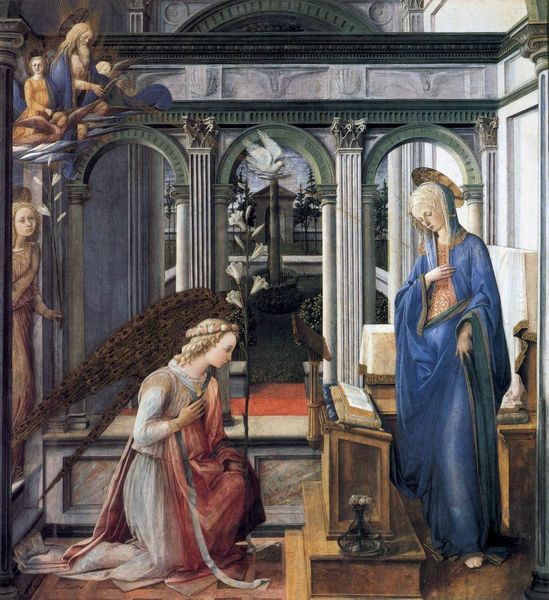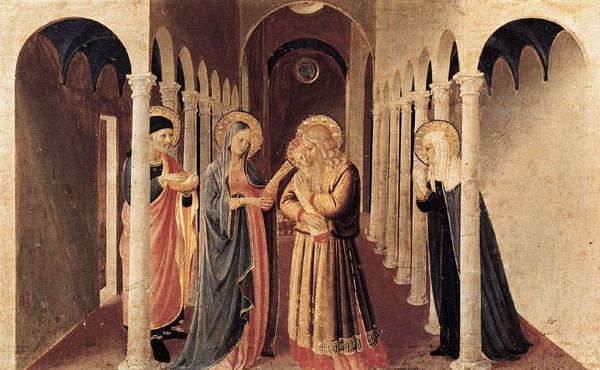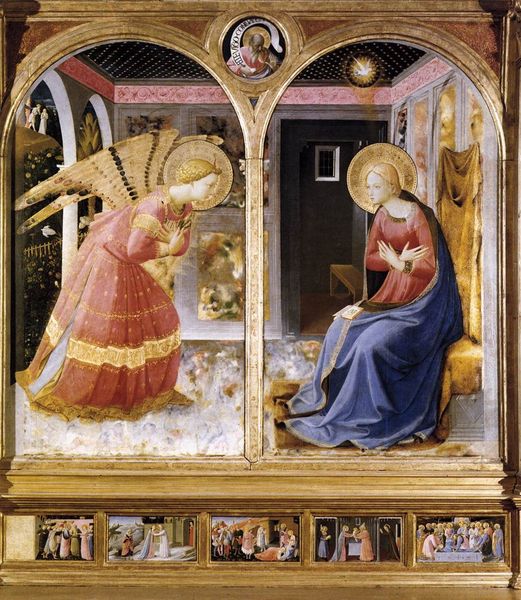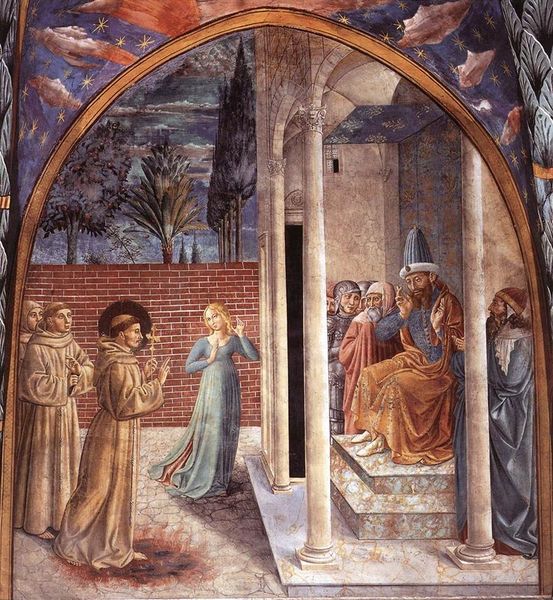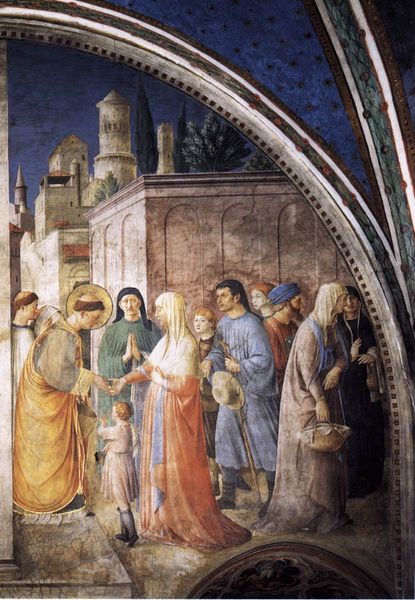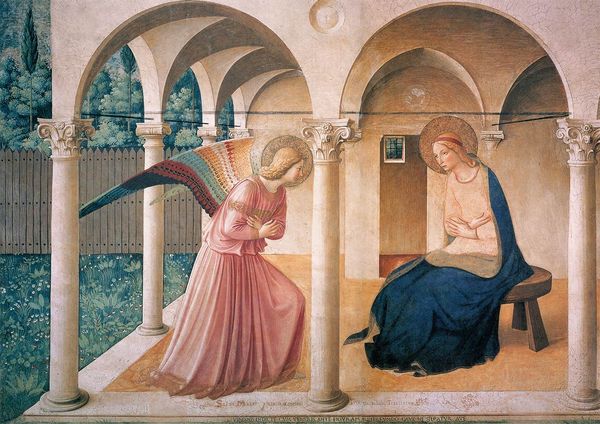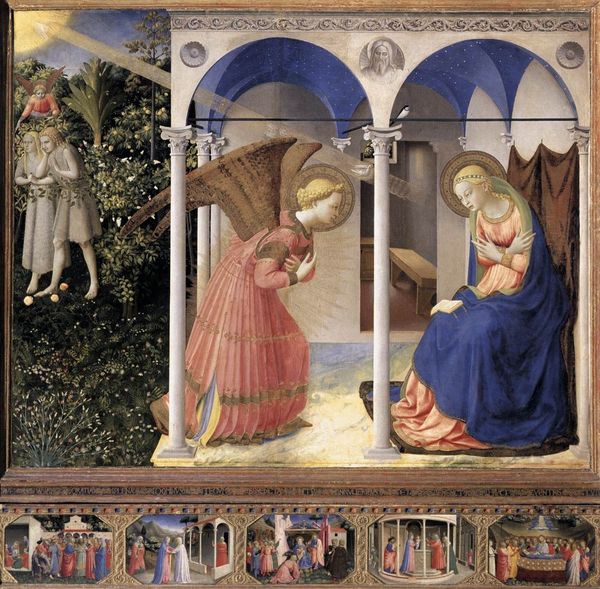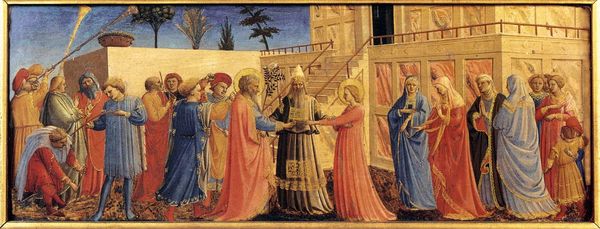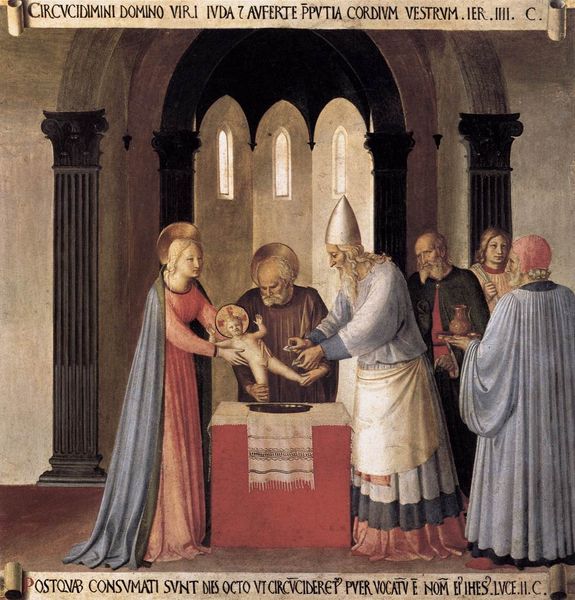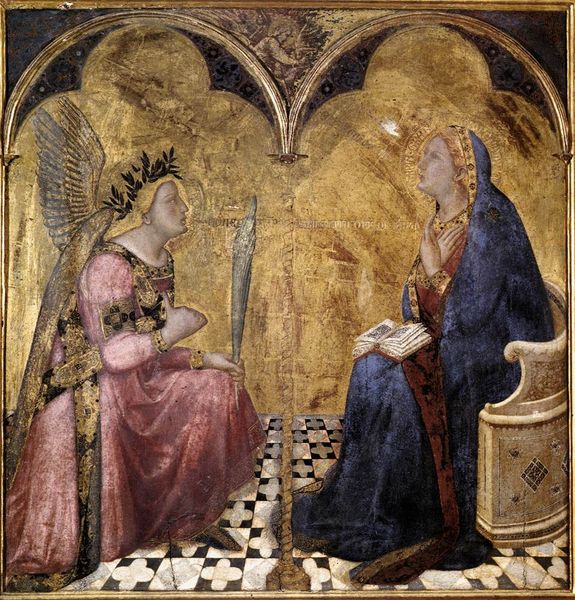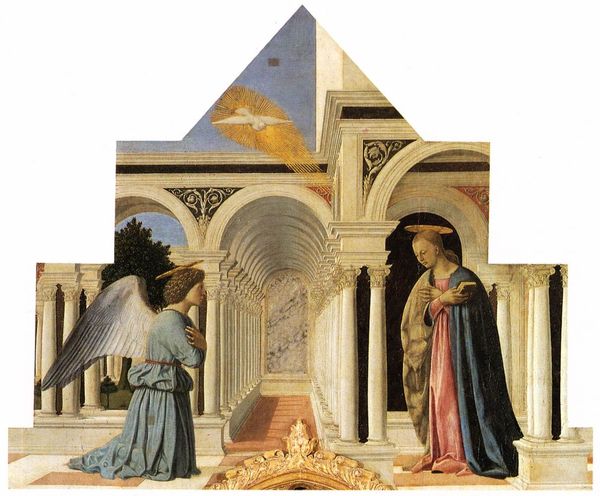
tempera, painting, fresco
#
narrative-art
#
tempera
#
painting
#
figuration
#
fresco
#
christianity
#
italian-renaissance
#
early-renaissance
#
virgin-mary
#
angel
Copyright: Public domain
Curator: Welcome. Before us hangs Fra Angelico's "Annunciation," a fresco painted around 1452 and still found at its original location in the Basilica di San Marco in Florence. It depicts the moment the angel Gabriel announces to Mary that she will conceive and bear the son of God. Editor: Oh, it has such a gentle presence, doesn't it? Almost like a whisper. The colors are so muted, pastel even. Yet the architecture is very crisp, lending it structure and definition, although maybe also, like, adding an air of unreality to this moment in real time... Curator: Absolutely. Angelico was a Dominican friar, so his paintings were profoundly shaped by his religious beliefs. Here, the use of early Renaissance perspective serves to create a serene and ordered space. But that's just the backdrop for a transformative divine moment, isn't it? Note, too, how Fra Angelico embeds inscriptions and direct quotes from Isaiah and Luke directly onto the fresco itself. How's that for framing the context? Editor: Those butterfly wings are the highlight for me; the boldness contrasts dramatically with everything else. This must be signaling to something, right? Almost as if the message needs this jolt of unexpected boldness in order to pierce the atmosphere... otherwise maybe it simply disappears like a ripple into still water. Curator: The intense coloration in the wings offers that perfect counterpoint. Also notice Mary’s humble demeanor and posture; she shrinks from the angel almost imperceptibly, which for 15th century audiences really underscores the importance of obedience and faith in religious life. Editor: In our own lives, those moments are perhaps never grand, announced by butterfly-winged angels, but still powerful. More modest, sure, but meaningful all the same. Curator: And Fra Angelico was masterful in finding just such perfect balances of simplicity, elegance, and of course theological heft. A remarkable work.
Comments
No comments
Be the first to comment and join the conversation on the ultimate creative platform.
